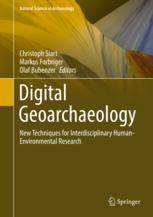Digital Geoarchaeology can be regarded as an intersection of disciplines that contributes to the consolidation of different academic perspectives. It represents a novel approach in terms of computer scientific methods combined with geoscientific know-how and archaeological expertise to multi-methodically investigate past human-environmental relationships (Siart et al. 2018).
In the new textbook “Digital Geoarchaeology” by Springer, which was edited by our department colleagues, a completely new and comprehensive perspective on this rapidly growing academic field is given.
We contributed two chapters. One chapter describes how LiDAR can be used in Geoarchaeology and the second chapter gives insights into cultural remnants that we identified with LiDAR close to Heidelberg Castle (check it out):



